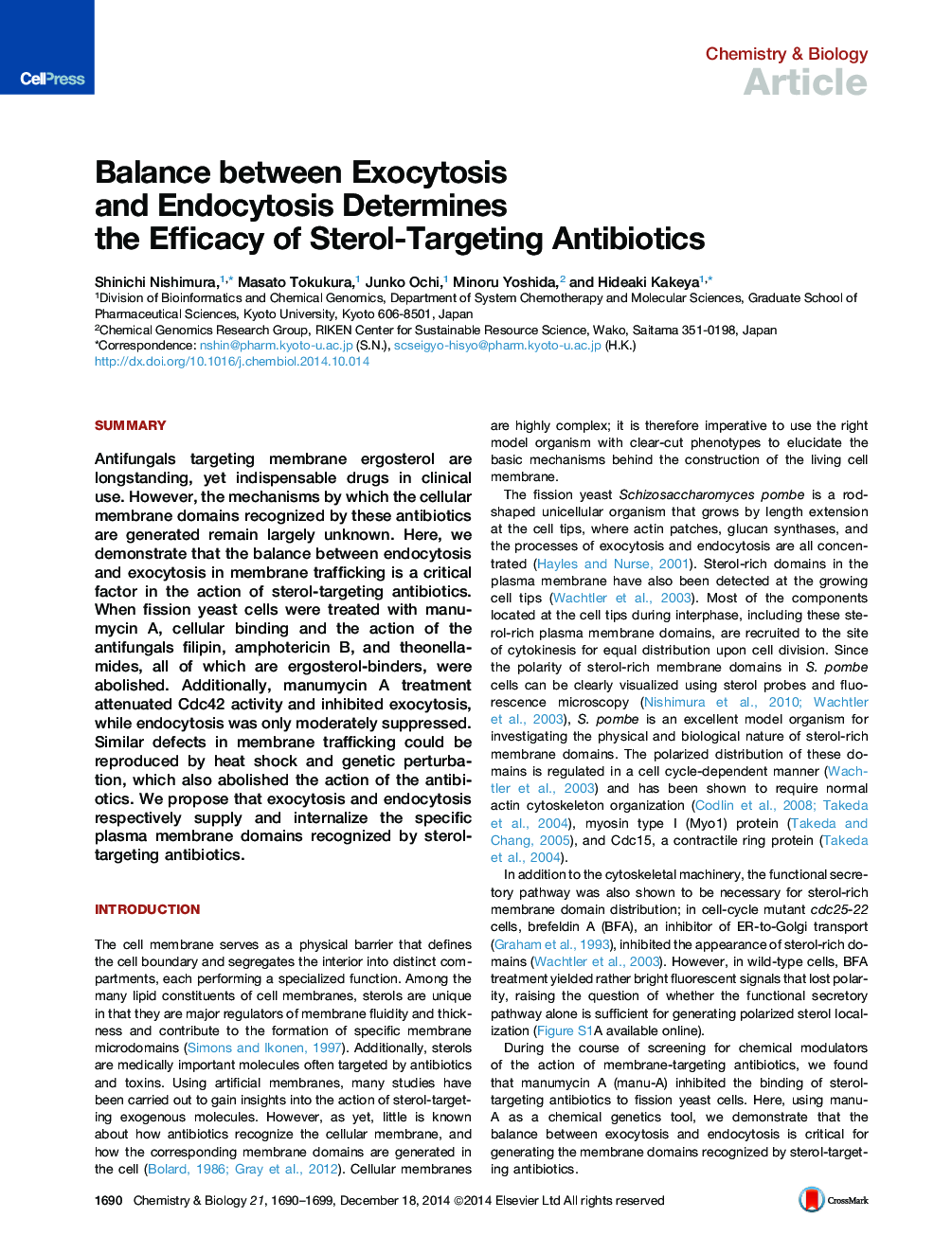| Article ID | Journal | Published Year | Pages | File Type |
|---|---|---|---|---|
| 1391546 | Chemistry & Biology | 2014 | 10 Pages |
•Balance in membrane trafficking determines efficacy of sterol-targeting antibiotics•Manumycin A disrupts the balance of membrane trafficking•The effect of sterol-targeting antibiotics is attenuated by manumycin A
SummaryAntifungals targeting membrane ergosterol are longstanding, yet indispensable drugs in clinical use. However, the mechanisms by which the cellular membrane domains recognized by these antibiotics are generated remain largely unknown. Here, we demonstrate that the balance between endocytosis and exocytosis in membrane trafficking is a critical factor in the action of sterol-targeting antibiotics. When fission yeast cells were treated with manumycin A, cellular binding and the action of the antifungals filipin, amphotericin B, and theonellamides, all of which are ergosterol-binders, were abolished. Additionally, manumycin A treatment attenuated Cdc42 activity and inhibited exocytosis, while endocytosis was only moderately suppressed. Similar defects in membrane trafficking could be reproduced by heat shock and genetic perturbation, which also abolished the action of the antibiotics. We propose that exocytosis and endocytosis respectively supply and internalize the specific plasma membrane domains recognized by sterol-targeting antibiotics.
Graphical AbstractFigure optionsDownload full-size imageDownload high-quality image (443 K)Download as PowerPoint slide
